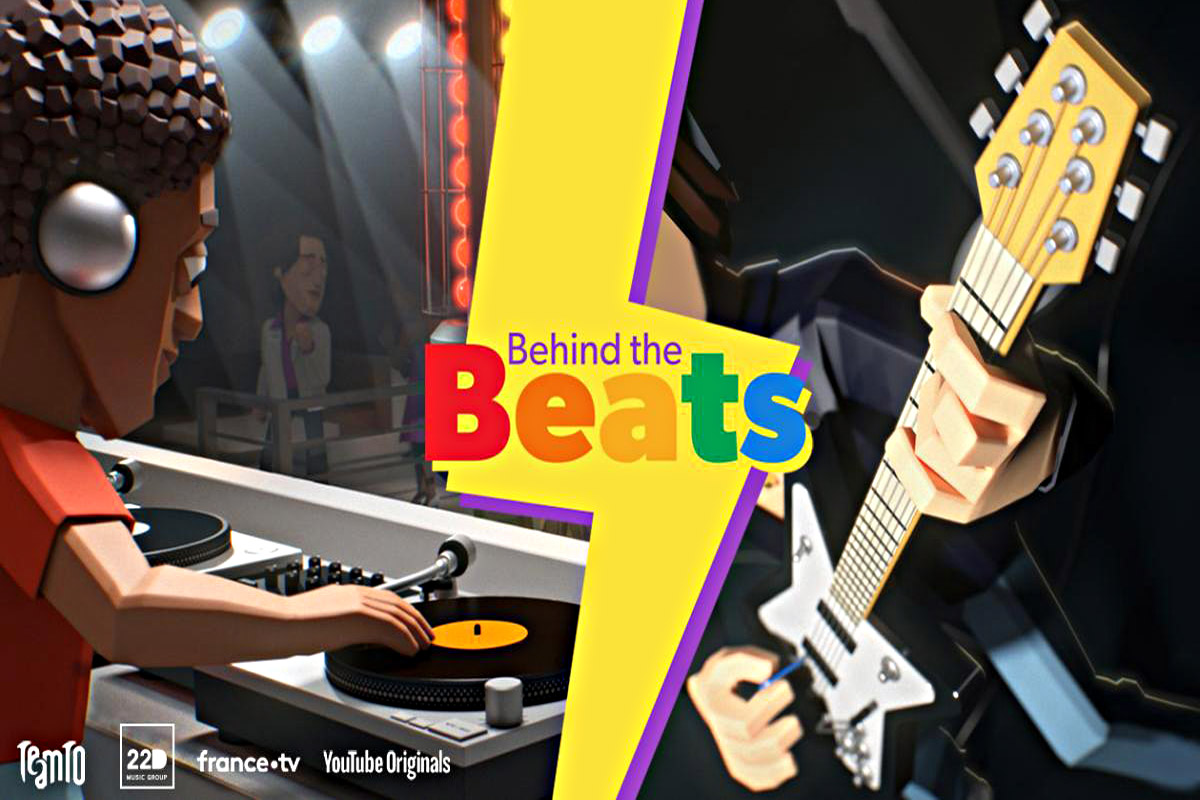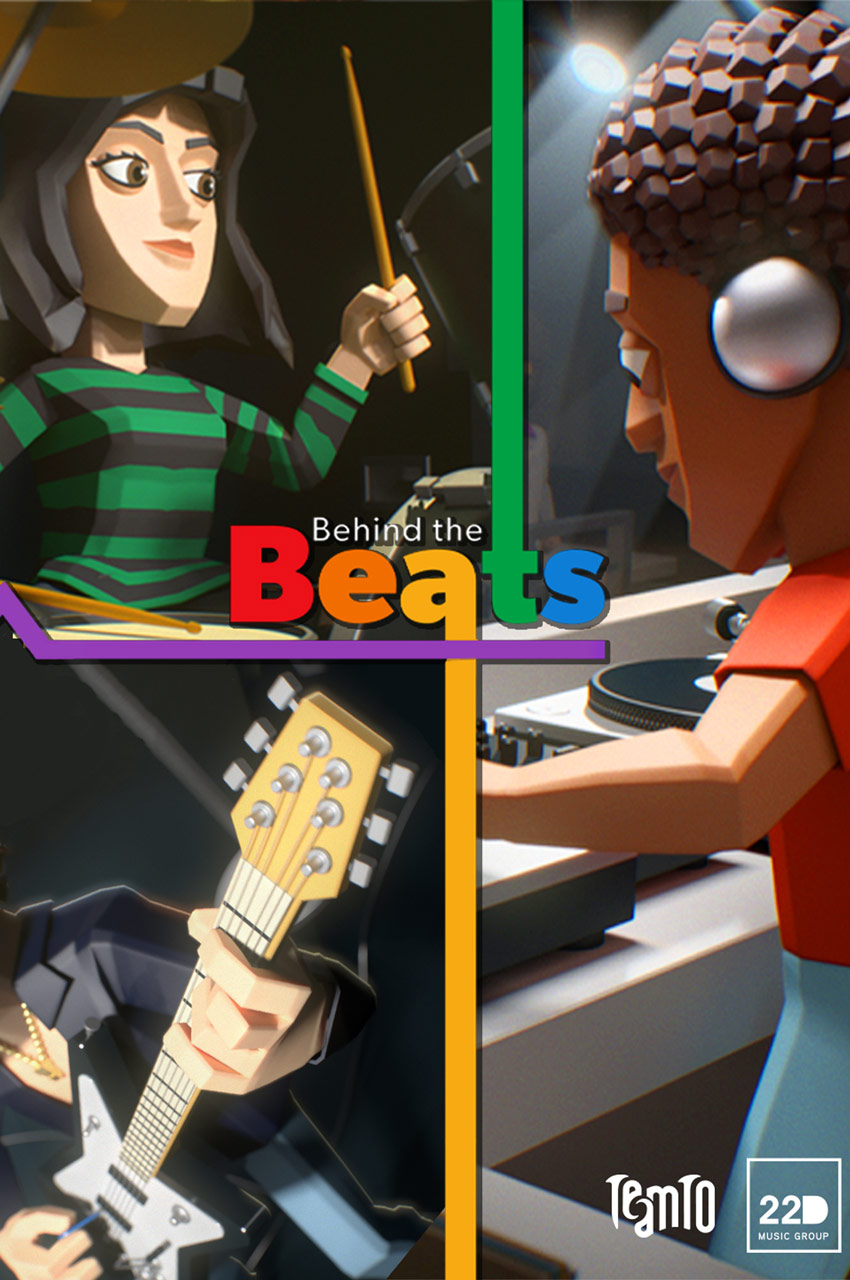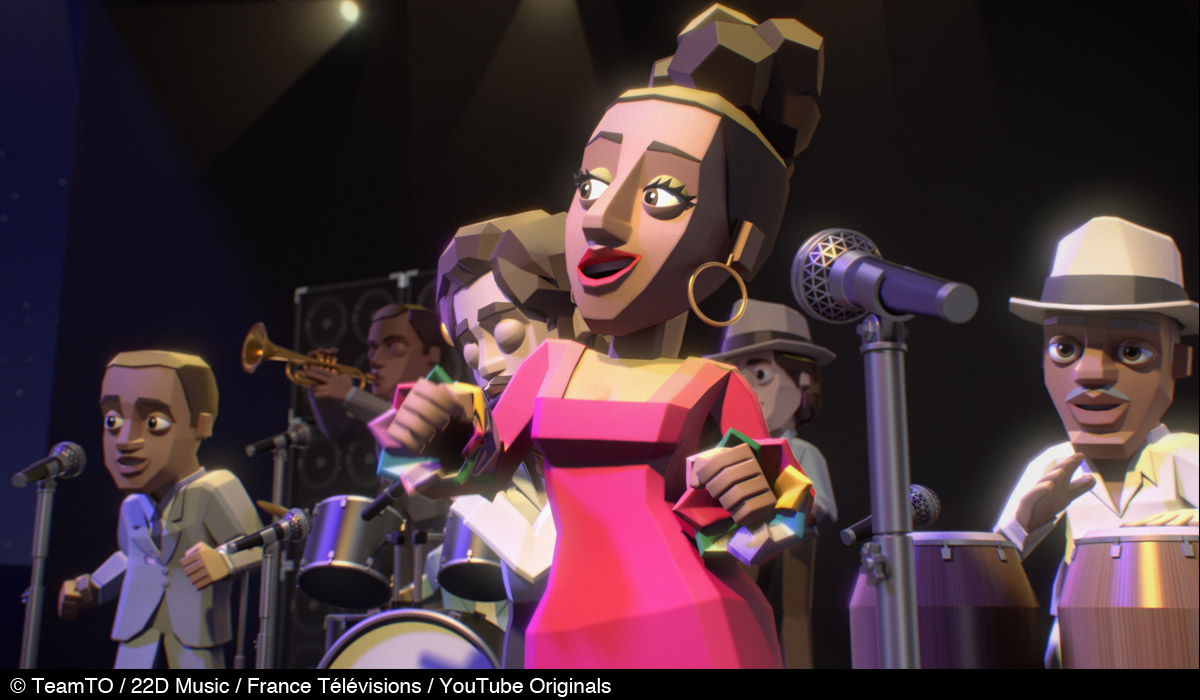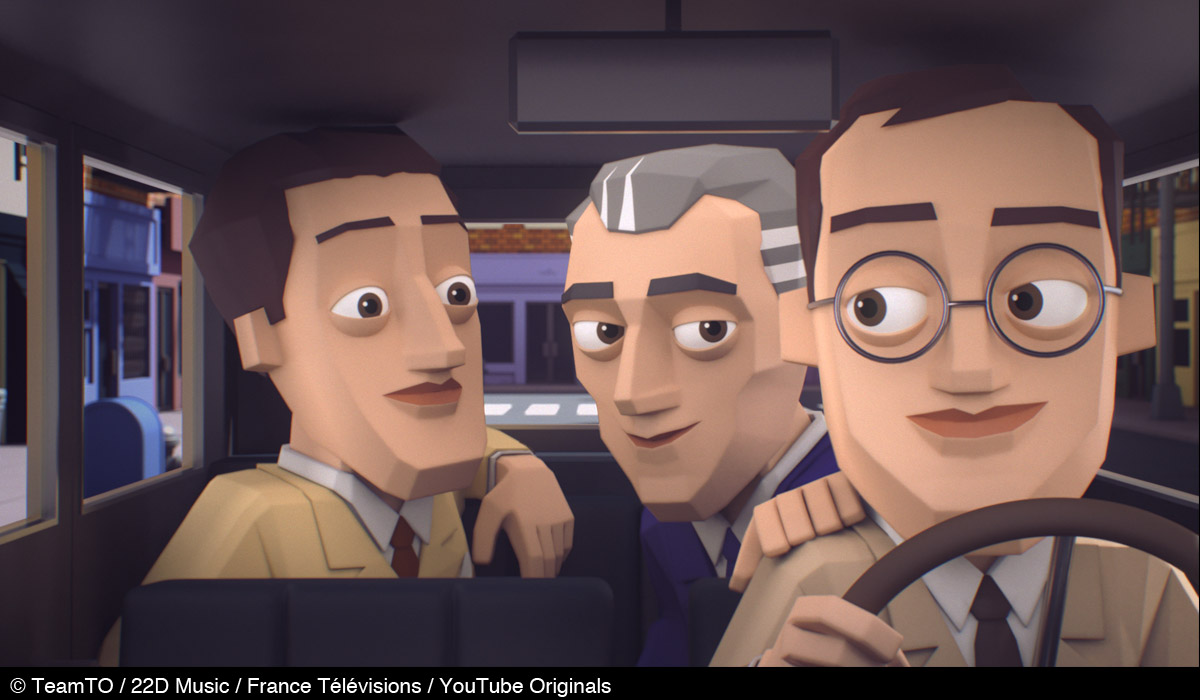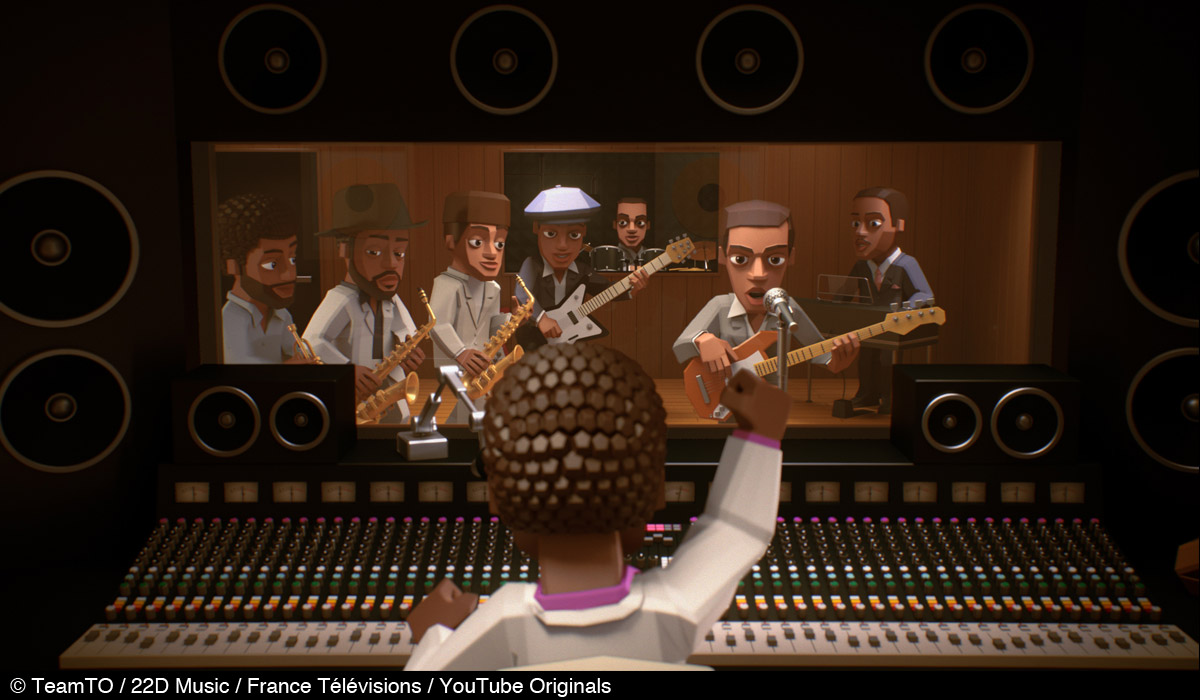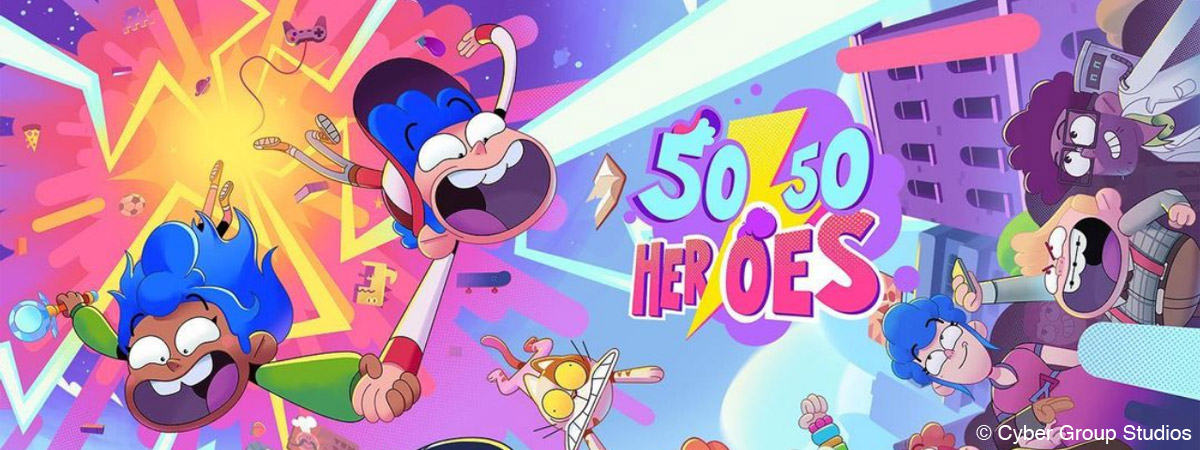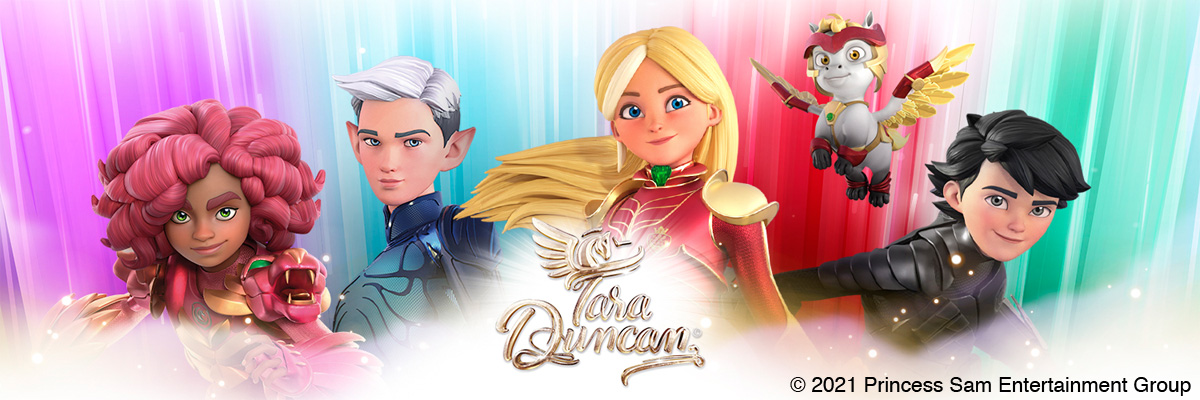Synopsis
Behind the beats is an animated series for families that tells the stories of how talented musicians with incredibly different styles came together, revealing the often-unexpected origins of new musical genres. Who knew the beats of these original tunes still reverberate in today’s pop music?! Using funky, dynamic animated storytelling with our lively narrators, the series explores the stories behind movements such as New Wave, Rock’n’Roll, G-Funk, Reggae, Electro Pop and Trap.
Behind the beats
Director: Baptiste Jaquemet
Scriptwriters: Baptiste Jaquemet & Mike Cameron
Producers: Corinne Kouper (TeamTO, France) and Emmanuel Deletang (22D Music Group, France)
Format: 26 x 5’
Target audience: Teen and Family
Techniques: 3D digital
Behind the beats is a lightly-paced 3DCGI animation series that depicts how the various genres of music were born. The visual style will leave a strong impression, as musicians are portrayed as charming, low-poly 3DCGI characters.
It is an ambitious animation series that aims to be a starting point for everyone to grow an interest in all the music genres they haven’t listened to before. The series summarises the stories of key musicians who relate to the birth of each new music genres into 5 minutes short stories, with a sense of humour. It also describes the relations and influences each other among variety of music genres in the world.
The series is a co-production with France TV for the French market, and with YouTube for the global market. YouTube Originals show Behind the Beats has clocked up almost 12 million views since the release of its first eight episodes, which began on 17th November 2022.
We interviewed Baptiste Jaquemet, the director of the series, who has previously directed animation for several music videos with similar graphic styles as this series, at 25th Unifrance Rendez-Vous in Paris.
*: You may read our other interview on this series here that we heard from Corinne Kouper, the producer, when the series was pitched at Cartoon Forum 2019.
Interview with Baptiste Jaquemet
Hideki Nagaishi (HN): What part of the series appeals to or entertains its target audiences the most?
Baptiste Jaquemet: My initial wish was to share my love of all music with as many people as possible and to make people want to listen to more of it. The history and artistic journey of great musicians fascinate me. The musical genres are all cousins of the same family and discovering the links that unite them is, I hope, something surprising and exciting. Everyone can find an interest in a style that they thought a priori not to like. You just have to take the right door.
HN: How did your journey on this animation series project start?
Baptiste Jaquemet: I am as much a fan of animation as I am of music. My superheroes are my favorite musicians and I have always tried to put their music in pictures and tell their stories through different projects (music videos, short films, etc.). This project began to crystallize in my head almost 5 years ago when I had the idea of telling the story of music like a big family tree. I directed alone at home a first pilot of 2m30s telling the story of the godfather of hip hop: Kool Herc. With this pilot under my arm, I then went in search of an animation studio capable of producing an entire series. The French studio TeamTO was quickly seduced by the idea and the development phase was able to begin. The episode on hip hop, as I conceived it, is part of the 26 episodes of the series.
HN: What were the most impressive things for you throughout the project?
Baptiste Jaquemet: The most impressive thing is the enthusiasm generated by the project. It was a great source of joy, and great stress. But gaining the trust of my favorite artists to get the right to use their songs was an incredible and therefore emotionally intense experience. Once their trust had been acquired on the time of synopsis that I had submitted to them, it was a question of not disappointing them. Seeing Nile Rodgers and Snoop Doog cover the title We are family for the theme song is beyond my wildest expectations and dreams.
HN: How did you select the songs and artists in the series?
Baptiste Jaquemet: I wanted above all to define the obvious major currents (rock, hip hop, pop, techno, reggae, etc.) before entering niches. In my opinion, it was necessary to start by drawing the biggest branches of the family tree of the history of music. I most often started from genres and not from artists. The question then was to define which was the most representative artist (innovative, popular and influential) of each genre. I tried to be as objective as possible in my choices, even if a subjective part could weigh in the balance on certain subjects. And when I had a doubt between two songs, I let my children choose. Doubt was then no longer allowed.
HN: What kind of research did you carry out when developing each episode?
Baptiste Jaquemet: I have always read a lot of interviews or biographies of artists but I did it here more than ever. Some generalist books are a starting point for tackling a subject. Unfortunately the books are always single genres. You find books on rock, another on jazz, another on techno, but too rarely books that weave links between genres. The links are found more in the interviews of the artists themselves when they declare their influences and their stories. Above all, I wanted to base my scenarios on facts and quotes and not on clichés and subjective opinions.
HN: What did you take care in the most when writing the story of each episode?
Baptiste Jaquemet: Once I had defined the hero of an episode, I tried to talk about him/her as much as possible. The Aretha Franklin episode is “a” story of soul and not “the” story of soul. Her musical influences are hers as she has been able to declare them. The same goes for all episodes. The musical choices are above all the taste of the artists themselves before being mine. Then it was very important for me to remain simple, logical, and accessible to everyone and to find the moments in the life of an artist that best explain the game of musical influence between generations. Something finally little discussed in the biopics.
HN: What was the most important goal on the overall visual design?
Baptiste Jaquemet: A 3D animation series is usually based on a certain recurrence of characters and sets. The challenge was of course to represent as many different artists and universes and to almost start all over again with each episode. In terms of production, it is more about 26 short films than a classic series. The low-poly style that I personally have been developing for a long time is simple and quick to create. The challenge was more for me to teach it to a production team on a large scale and in unprecedented times.



